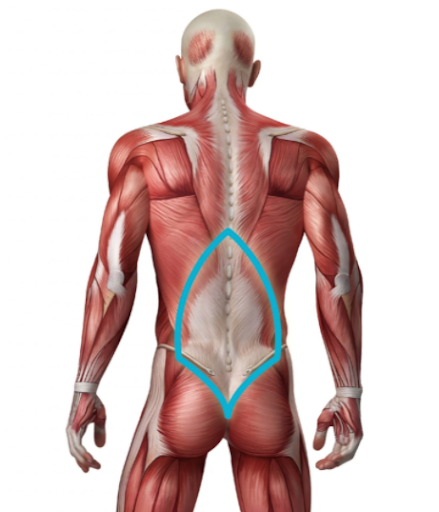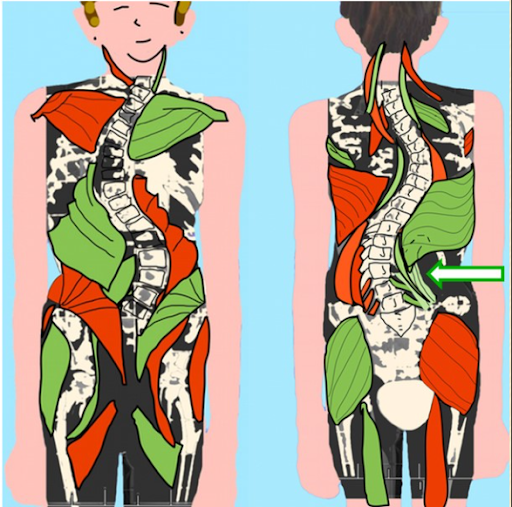What is Myofascial Release Therapy?
Myofascial release focuses on reducing pain by easing the tension and tightness in the trigger points.
What is Myofascial Release Therapy
John F. Barnes Myofascial Release (MFR) is a hands-on, non-invasive, pain management technique that uses gentle sustained pressure into areas of restriction until the facial restrictions are released.
What is Fascia?
Fascia is a thin layer of connective tissue that surrounds every organ, blood vessel, bone, nerve fiber, and muscle in the human body. The fascia has nerves endings that make it almost as sensitive as skin. Healthy fascia is smooth, slippery, and flexible. In the event of trauma, surgery, or inflammation, the fascial can become tight, stuck together with a gummy consistency often known as trigger points or adhesions. Unfortunately, it is difficult to diagnose myofascial restrictions because they do not show up in any of the standard tests such as x-rays, MRI’s, myelograms, CAT scans, electromyography, etc.
How does fascia contribute to pain?
The adhesions or trigger points within the fascia exert a huge amount of pressure on sensitive structures. These adhesions prevent the movement of the fascial and are a contributing factor in stiffness and pain. It is not easy to understand which trigger point is responsible for an individual’s specific pain. For example, a trigger point in the neck could cause pain in the hip, or a trigger point in the back could cause pain in the hip or groin. For this reason, myofascial release is often used over a broad area of muscle and tissue rather than at single points.

Who can benefit from Myofascial Release?
Many individual seek myofascial treatment after losing flexibility or function following an injury. MFR can help with back, shoulder, hip, or any other joint pain. It can also help with fibromyalgia, headaches, or virtually any pain within a muscle or soft tissue. Many patients seek myofascial treatment after losing flexibility or function following an injury. At ScoliosisPTJax we use MFR on many individual to release tension in the back, shoulder, or hip.
How does Myofascial Release work?

To understand MFR we must first understand how muscle tightness or imbalance in one area can affect another area in the body. Looking at the fascia man- courtesy of John Barnes, we see that tightness in the front of the right hip, which causes the hip to pull forward. This, in turn, causes an imbalance above and below the hip, effecting the spine, shoulders, knees and feet. A person with this type of restriction could have headache, neck pain, and low back pain, all caused from tightness in the hip.
A therapist trained in MFR will begin with an evaluation to determine your alignment. The therapist will begin by observing right and left sides of your body at your head (ears) shoulders, hips, knees, and ankles. The therapist might perform manual muscle tests to see if you are stronger/weaker on one side compared to the other. From there the therapist will determine which area of your body is best to begin the treatment session.
The MFR session is similar to a message with the client relaxed on a massage table. The therapist begins working and stretching areas that feel rigid with light manual pressure. The therapist then uses pressure to release the trigger points and adhesions. During the session, you might feel a burning or tingling or heating sensation either directly under the therapist’s hands or in a completely different area. Remember the fascia is all over the body, so the therapist might be working on your chest, and you could feel the burning sensation in your abdomen or similar areas. Once the therapist feels a release in one area they might move to another area of the body to continue the session.
Instrument assisted Soft Tissue Mobilization (IASTM)
Specially designed instruments can be used to effectively break down fascia restrictions and scar tissue. The ergonomic design of these instruments provides the clinician with the ability to locate restrictions and allows the clinician to treat the affected area with the appropriate amount of pressure.
Studies have also shown clinical benefits of IASTM showing improvements in range of motion, strength, and pain perception treatment
The Graston Technique is one type of IASTM. There are 6 core tools used in Graston Technique. These tools are made of stainless steel with rounded edges not sharp. The instruments are used to scan over areas and detect adhesions. During a Graston Technique session,
- The practitioner will utilize the Graston instruments to scan, then treat, the affected area.
- Treatment generally consists of the clinician rubbing the affected area(s) with the handheld stainless steel Graston Technique instruments, using very specific, calculated massage techniques.
- Treatment time is usually 30 to 60 seconds per area treated.
- It is common for patients to experience some discomfort during the procedure.

Can Myofascial Release help with Back Pain?

Thoraco- lumbar facia(diamond shape in the low back)
YES!
The thoracolumbar fascia is a large, roughly diamond-shaped area of connective tissue in the low back. Research shows that individuals with low back pain have thicker and tighter thoracolumbar fascia. Providing MFR to this diamond shape area followed by and stretching and strengthening program can reduce low back pain.
How can Myofascial Release help with Scoliosis?
When we observe scoliosis on an x-ray, we generally see the C or S shape curve going to the right or left. However, we know that with scoliosis there is a rotation of the spine in a 3 dimensional way. There are shorter and longer muscles on the right side of the body as compared to the left side. In addition, there are longer and shorter muscles on the front of the body as compared to the back. Along with being shorter or longer, these muscles are also weaker or stronger, leading to a 3-dimensional imbalance within the muscles and fascial along the scoliosis body. This imbalance contributes to adhesions and trigger points within the muscles that could continue to tighten and continue to pull the spine into the scoliosis posture. MFR works to balance the muscle lengths. It is strongly recommended that in addition to MFR a client works with a therapist certified in Scoliosis Specific Exercises, such as the Schroth Method.

The green muscle is SHORT
The red muscle is LONG
In the right low back (lumbar concave) the muscle is shortened
At ScoliosisPTJax our therapists can evaluate your back and determine if the myofascial release can benefit you.